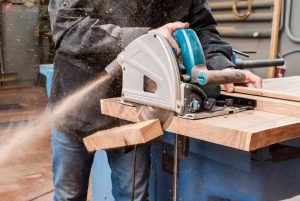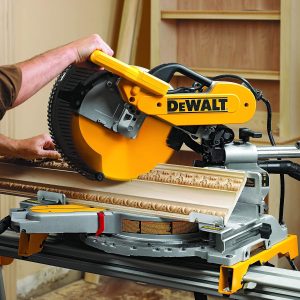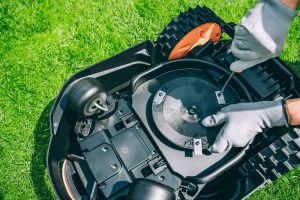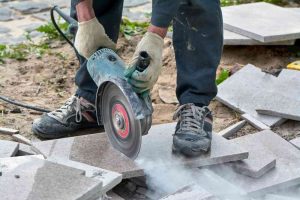Mowing tall, thick grass can be one of the toughest challenges for any homeowner or landscaper. Standard mower blades often fail to provide the suction and cutting power needed, leaving behind uneven patches and clumps of grass.
That’s where specialized lawn mower blades for tall grass come in. Designed with high-lift or extreme-lift technology, these blades create stronger airflow, cut cleaner, and discharge clippings efficiently—even in overgrown lawns.
In this guide, we’ll explore the best lawn mower blades for tall grass, what makes them effective, and how to choose the right option for your mower.
Best Lawn Mower Blades For Tall Grass Reviews and Comparisons
Here are the top 5 mower blades for tall grass now, chosen for performance, durability, and compatibility.
What Is the Maximum Height of Lawn Grass?
Grass species and climate determine the maximum recommended height before mowing becomes difficult.
- Cool-season grasses (fescue, ryegrass, Kentucky bluegrass): Best kept between 3–4 inches. Once they reach 6–8 inches, mowing becomes more difficult, and blades may bend instead of cutting cleanly.
- Warm-season grasses (Bermuda, zoysia, St. Augustine): Typically mowed between 2–3 inches. Beyond 5–6 inches, clumping and scalping are common.
- Tall fescue or wild grasses: These can grow well above 12 inches if not mowed regularly, requiring specialized blades with extra lift.
In short, anything beyond 6–8 inches requires high-performance mower blades to avoid clogging, uneven cutting, or mower strain.
Key Factors to Consider When Buying Lawn Mower Blades for Tall Grass
Cutting tall, thick, or wet grass is more demanding than maintaining a regularly trimmed lawn. The wrong mower blade can leave behind clumps, strain your mower’s engine, or even damage your deck.
To avoid these issues, you’ll want to choose blades specifically engineered for tougher mowing conditions. Below are the most important factors to evaluate before purchasing the best lawn mower blades for tall grass.
Blade Lift Design
The lift refers to how much airflow a blade generates to lift grass upright before cutting. This is especially important for tall grass, which often bends instead of standing straight.
- High-lift blades are the most recommended option for tall grass. They feature aggressively angled edges that create strong suction, pulling blades of grass upright so the cut is clean and even. High-lift blades also push clippings efficiently out of the deck, reducing clumping.
- Extreme-lift blades go one step further, producing maximum airflow for the toughest conditions like overgrown or wet grass. They deliver a very clean cut but require more engine power, so they’re best suited for riding mowers or high-horsepower walk-behind models.
- Standard blades are typically flat and designed for general mowing. While fine for short or medium grass, they don’t generate enough suction to handle tall grass efficiently. They often leave behind stragglers or cause clogging.
If tall grass is a recurring challenge in your yard, investing in high-lift or extreme-lift blades is essential.
Compatibility
No matter how powerful a blade looks, it won’t work properly if it doesn’t fit your mower. Compatibility should always be your first consideration.
- Deck size: A 42-inch deck, for example, usually requires two 21-inch blades. Using blades even half an inch too short or too long can result in uneven cutting or even safety hazards.
- Mounting hole type: Blades connect to the mower spindle through a center hole, which comes in shapes like a 5-point star, a 6-point star, a bow-tie, or a round. Always match the mounting hole type to your mower’s spindle.
- OEM replacement number: Your mower manual will list OEM part numbers. Cross-checking these ensures you buy blades designed to fit perfectly.
Installing the wrong size or hole pattern can lead to vibration, deck damage, or inefficient cutting.
Material & Durability
Blades for tall grass undergo more stress, so durability is key.
- Hardened or heat-treated steel blades last longer under heavy use, resisting bending and dulling.
- Protective coatings like powder coating or anti-rust finishes help blades withstand exposure to moisture, especially important when mowing wet grass.
- Thickness also matters. Thicker blades resist chipping and last longer, but they may require more torque, making them better suited for heavy-duty mowers.
Choosing durable materials reduces how often you’ll need replacements, saving money over time.
Cutting Edge Sharpness
Tall grass requires blades with a sharp cutting edge to avoid tearing.
- A sharper edge slices through grass cleanly, reducing stress on both the mower and the lawn. Clean cuts also promote healthier grass regrowth.
- Since tall and thick grass wears edges down faster, these blades need sharpening more often—sometimes every 8–10 hours of mowing.
A dull blade will rip and fray grass, leaving brown tips and increasing the risk of disease.
Discharge & Bagging Needs
How you plan to handle clippings affects which blade you choose.
- High-lift blades are ideal for bagging since they generate strong airflow that pushes clippings directly into the collection bag.
- If you prefer mulching, consider hybrid or mulching blades that chop clippings into smaller particles. These blades are less efficient in very tall grass, but they’re useful if you mow regularly and want to recycle nutrients back into the soil.
For lawns that frequently grow tall, prioritize discharge and bagging performance over mulching.
Price vs. Longevity
Blades range from budget-friendly aftermarket replacements to premium OEM parts.
- Cheaper blades may save money upfront, but often wear out quickly under tall grass conditions. They may also require more frequent sharpening.
- Premium or OEM blades are typically made from higher-grade steel, offering longer life and better performance. While they cost more initially, they usually last longer and provide better results, making them more cost-effective over time.
When mowing tall grass, durability and compatibility outweigh small cost savings.
In summary, the best blades for tall grass are high-lift or extreme-lift designs made of hardened steel, sharp enough to slice through dense growth, and properly matched to your mower’s size and spindle type. Investing in quality ensures smoother mowing, cleaner cuts, and healthier lawns.
UDC Parts Replacement Blades

The UDC Parts Replacement Blades are engineered for heavy-duty mowing, making them a solid choice for tall and thick grass. Designed to replace OEM blades for popular brands like MTD, Cub Cadet, and Troy-Bilt, these blades measure 21 inches each and come in a 3-pack set.
Their aggressive cutting edges, paired with durable construction, ensure consistent results in demanding conditions. The high-lift design helps lift grass upright, minimizing clumping and improving bagging efficiency.
Ideal for homeowners who deal with fast-growing lawns, these blades offer a balance between affordability and reliable performance.
Key Features
- 21-inch blades, 3-pack set.
- High-lift design for tall grass.
- Compatible with multiple mower brands.
- Heat-treated steel construction.
Pros
- Excellent suction for bagging.
- Sharp edges cut cleanly through dense grass.
- Affordable 3-pack value.
Cons
- May wear faster in sandy soil.
- Not ideal for mulching-only setups.
EGO Power+ AB2101D Dual-Blade Set
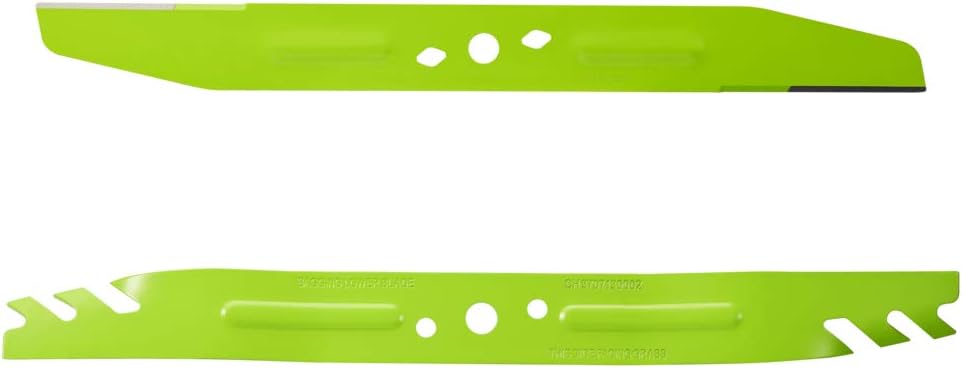
EGO is a leader in cordless electric mowing, and their AB2101D Dual-Blade Set proves why. Designed for the EGO 21-inch self-propelled mower, this set uses a stacked dual-blade system for superior cutting power.
Unlike single blades, the dual system slices grass into smaller pieces, making it ideal for tall or thick lawns. The aerodynamic design improves airflow, reducing clogging and enhancing bagging efficiency. Built from hardened steel, the blades promise durability while maintaining compatibility with mulching, bagging, and side discharge.
Key Features
- Dual-stacked blade system.
- Compatible with EGO 21-inch LM2135SP.
- Optimized for mulching and bagging.
- Aerodynamic design for smooth airflow.
Pros
- Excellent at handling tall grass without clogging.
- Cleaner cuts with fine clippings.
- Long-lasting hardened steel.
Cons
- Limited to EGO mowers.
- More expensive than generic replacements.
PetMigo Mulching Blades

The PetMigo Mulching Blades are designed as direct replacements for Craftsman, Poulan, and Husqvarna mowers. Measuring 21 inches, these blades focus on delivering an even cut while reducing clumping in tall grass.
The serrated edges make them particularly effective for mulching, as they chop grass into finer particles before discharging. Their durable build ensures longer service life, while compatibility with popular models makes them a practical choice for homeowners.
Key Features
- 21-inch mulching blade design.
- Compatible with Craftsman, Husqvarna, and Poulan mowers.
- Serrated cutting edges for finer clippings.
- Built with durable, heat-treated steel.
Pros
- Excellent mulching capability.
- Strong construction for longevity.
- Good for tall grass maintenance.
Cons
- Not as effective for bagging as high-lift blades.
- Requires frequent sharpening for best results.
KEDAKEJI Replacement Blades

The KEDAKEJI Replacement Blades are built for homeowners who need reliable cutting power in tall grass. Compatible with Craftsman, Poulan, and Husqvarna models, this set includes multiple 21-inch blades made from high-quality steel.
Their high-lift design ensures grass is lifted upright for a precise cut, while also enhancing bagging efficiency. These blades are an excellent budget-friendly replacement that doesn’t compromise performance, making them a go-to option for large yards with tall grass growth.
Key Features
- 21-inch blade size.
- High-lift design for tall grass.
- Compatible with Craftsman, Poulan, Husqvarna.
- Durable steel construction.
Pros
- Strong lift for tall grass.
- Affordable replacement option.
- Good durability for regular use.
Cons
- Not ideal for mulching.
- May dull quicker on rough terrain.
ELITEWILL Replacement Blades (John Deere & Others)

The ELITEWILL Replacement Blades are crafted for John Deere and compatible models, designed to handle tough grass conditions. Their extra-sharp edges and solid steel build ensure they cut tall and dense grass cleanly without overloading the mower.
The blades’ aerodynamic lift helps direct clippings for smoother bagging or discharge. Built to OEM standards, these blades provide both durability and performance, making them a reliable choice for demanding mowing conditions.
Key Features
- OEM-quality replacement.
- Fits John Deere models.
- High-lift aerodynamic design.
- Durable, sharp cutting edges.
Pros
- Excellent durability.
- Sharp edges for clean cuts.
- Great for bagging tall grass.
Cons
- Limited to John Deere compatibility.
- Pricier than generic options.
FAQ Section: People Also Ask
What blades are best for cutting tall grass?
The best blades for tall grass are high-lift or extreme-lift blades. These blades feature a pronounced upward curve at the back edge, which generates strong airflow inside the mower deck. The airflow is what lifts the blades of grass upright, allowing for a clean and even cut.
- High-lift blades are the most versatile choice for homeowners. They create enough suction to manage tall, thick, or slightly damp grass while also discharging clippings efficiently.
- Extreme-lift blades provide even greater airflow, making them ideal for very dense or wet grass conditions. However, they require more engine power and may put additional strain on smaller mowers.
By contrast, standard blades are designed for short or moderately maintained lawns and lack the suction required for overgrown grass. If your lawn frequently grows taller than 6–8 inches, upgrading to high-lift or extreme-lift blades will save you time, reduce clogging, and improve overall cut quality.
Can I use mulching blades on tall grass?
You can use mulching blades on tall grass, but it’s not always ideal. Mulching blades, sometimes called “3-in-1 blades,” are designed with serrated or curved edges that chop clippings into fine pieces and return them to the lawn as natural fertilizer.
The challenge with tall grass is that mulching blades may struggle to process the larger volume of material. When the grass is very long or damp, mulching blades often:
- Clogs the mower deck, requiring frequent cleaning.
- Leave behind clumps of grass instead of evenly distributed mulch.
- Reduce mowing efficiency, since the mower must work harder to recut tall clippings.
For the best results, mulching blades should be used on grass that is mowed regularly (usually no more than ⅓ of the grass blade height at a time). If your lawn has already grown tall, it’s better to mow first with high-lift blades to manage the bulk, then switch to mulching blades for finer finishing.
How often should mower blades be replaced?
Lawn mower blades should generally be replaced every 1–2 mowing seasons, depending on usage. For most homeowners, this means once per year is sufficient. However, the replacement schedule shortens if you frequently mow tall, thick, or rough grass, since these conditions wear blades out more quickly.
Factors that influence replacement timing include:
- Grass type: Coarse grasses dull blades faster than fine grasses.
- Soil conditions: Sandy or rocky soil will wear down edges quickly.
- Mowing frequency: More frequent mowing naturally shortens blade life.
- Blade material: Hardened or heat-treated steel blades last longer than standard steel.
A good rule of thumb: inspect your blades every 20–25 hours of mowing. If you see dents, bends, cracks, or excessive dulling, it’s time to sharpen or replace them.
How do I know if my mower blade is dull?
The easiest way to tell if a mower blade is dull is by looking at the condition of your lawn after mowing. Signs of dullness include:
- Frayed or torn grass tips instead of clean cuts. The tips may turn brown within a day or two.
- Uneven cutting patterns, leaving streaks or patches of uncut grass.
- Excess vibration or noise during mowing can indicate the blade is unbalanced.
You can also inspect the blade itself. If the cutting edge feels rounded instead of sharp, or if you notice chips and dents, it needs sharpening or replacement. For homeowners who mow tall grass often, blades should typically be sharpened every 8–10 hours of mowing to maintain efficiency.
Can dull blades damage my lawn?
Yes, dull blades can seriously damage your lawn. Instead of slicing through grass cleanly, a dull blade rips and tears at the blades of grass. This has several negative effects:
- Weakened grass health: Torn tips lose more moisture, leaving grass more vulnerable to heat stress and drought.
- Increased risk of disease: Ragged cuts create entry points for fungi and other lawn diseases.
- Unsightly appearance: Lawns cut with dull blades often develop brown, frayed edges that look patchy and uneven.
- Reduced mower efficiency: Dull blades make your mower work harder, consuming more fuel or battery power.
Regular sharpening or timely replacement not only keeps your lawn healthy but also extends the lifespan of your mower by reducing engine strain.
Conclusion
Tackling tall grass requires more than just a powerful mower—it requires the right blade design. High-lift and extreme-lift blades deliver the suction and precision needed to cut cleanly through overgrown lawns.
- For value and compatibility, the UDC Parts Replacement Blades are a top choice.
- For premium performance, the EGO Power+ Dual-Blade stands out.
- For mulching needs, the PetMigo Blades provide excellent results.
No matter your mower brand, choosing the best lawn mower blades for tall grass ensures cleaner cuts, healthier lawns, and less strain on your equipment.
